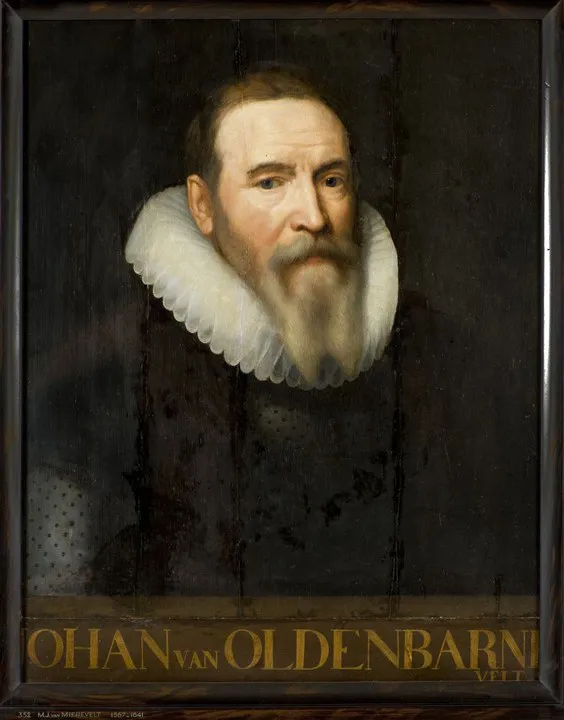How a great politician was sentenced to death

Why Johan van Oldenbarnevelt was beheaded, despite being one of the greatest statesmen in Dutch history
In the Netherlands, it is rare for politicians to have to defend themselves in court – as recently happened to Geert Wilders, head of the Freedom Party. If Wilders had subsequently been sentenced to death, though, this would have struck us as extremely strange. Yet this is what happened to Johan van Oldenbarnevelt, four hundred years ago. Why was someone who now ranks as one of the greatest statesmen in Dutch history beheaded on the scaffold?
Friendship degenerates into conflict
Over the course of his life, Johan van Oldenbarnevelt (1547-1619) built up an impressive political career. He steered the Dutch Republic through the Eighty Years’ War with Spain and was co-founder of the Dutch East India Company. Aged around forty, he was made Land’s Advocate of the States of Holland. At that time, he still got on well with Prince Maurice, who was just nineteen.

Van Oldenbarnevelt meddles with Prince Maurice’s army
All this changed as a result of the now-famous Battle of Nieuwpoort in 1600. Against the prince’s will, Grand Pensionary Van Oldenbarnevelt sent Prince Maurice to lead the army. Privateers were harassing Holland’s merchant fleet, and it was Maurice’s task to drive them out of Dunkirk. While he was there, Maurice only just managed to fend off a sudden attack by the Spanish army. The relationship deteriorated further when Van Oldenbarnevelt agreed a treaty with the Spanish in 1609, for the benefit of trade.
'Prince Maurice was furious: he wanted to retain his role and income as a general, and keep on waging war. The two men never made up.'
Religious conflict develops into a fatal political struggle
A little later, in 1618, a religious conflict over the interpretation of the Bible erupted between two professors of theology. This led to a fight between the ‘Remonstrants’ and the ‘Counter-Remonstrants’ (orthodox Protestants). Van Oldenbarnevelt sided with the former, whereas Maurice sided with the latter. Van Oldenbarnevelt feared a coup by the Prince, who now finally spied his chance to rid himself of his political opponent. Along with others, including Hugo Grotius, he had Van Oldenbarnevelt arrested for treason, on the grounds that he had ‘breached the peace of the Church and State’. The Grand Pensionary was imprisoned in a little room in the Binnenhof. His wife and two sons-in-law, both trained lawyers, made every effort to get him released, but to no avail. One year later, in 1619, he was sentenced to death after a dubious trial and beheaded on the scaffold. Van Oldenbarnevelt never confessed his guilt, and his supporters saw the execution as a political murder.
An execution with major consequences for peace and prosperity
His execution also had disastrous consequences for the Dutch Republic. In the absence of an effective successor, the Republic lost its administrative and military superiority, and the conflict with Spain erupted again. Prince Maurice was unable to meet the high expectations that the people had of him. In 1623, Van Oldenbarnevelt’s two sons took revenge and attacked Prince Maurice, but the attack failed. His son Willem managed to get away, but his brother was arrested and imprisoned in the Prison Gate on charges of high treason. In 1623, Reinier van Oldenbarnevelt was also beheaded at the Groene Zoodje, the execution site by the Prison Gate. The death of Johan van Oldenbarnevelt has always been viewed as a black page in Dutch history.

